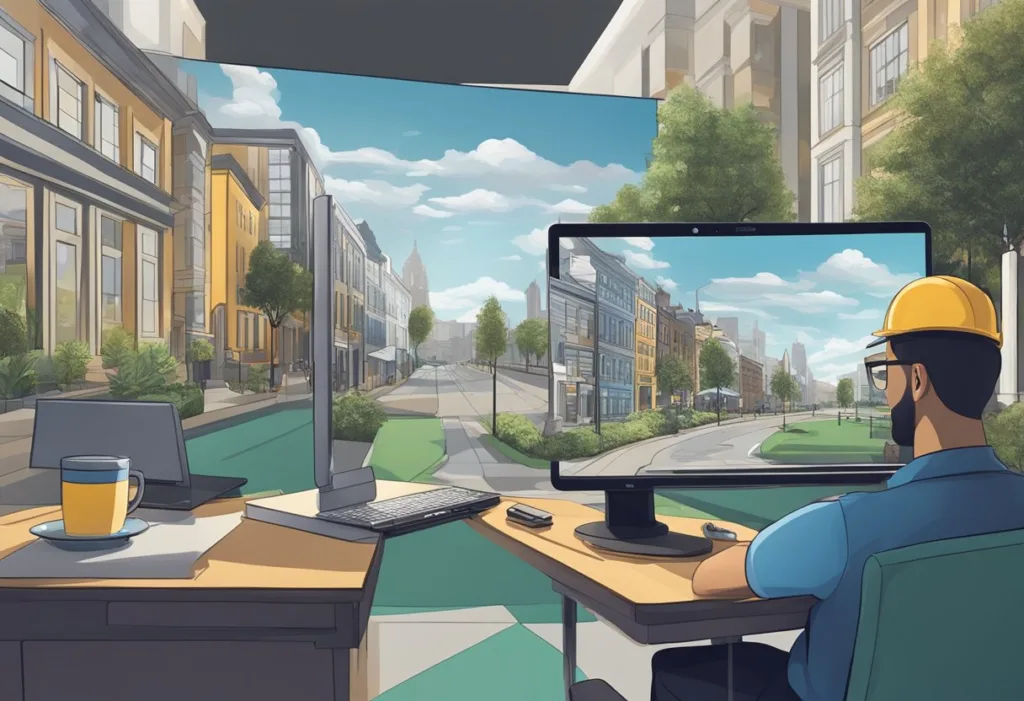Augmented reality (AR) is a technology that has been gaining popularity in recent years. It allows users to create and view experiences that blend the real world with digital elements. With the help of AR tools, developers and designers can create interactive experiences that are both engaging and informative. In this blog post, I will share with you 15 augmented reality tools that will be ideal for any AR project.
Fundamentals of Augmented Reality To create AR experiences, developers need to understand the fundamentals of AR technology. They need to know how to use AR tools to create digital elements that can be overlaid onto the real world. They also need to understand how to use sensors and cameras to track the position of objects in the real world.
Developing AR Experiences Developing AR experiences requires a combination of technical expertise and creativity. Developers need to know how to use AR tools to create 3D models, animations, and other digital elements. They also need to understand how to use programming languages to create interactive experiences that respond to user input. Designers can use AR tools to customize the look and feel of AR experiences, making them more engaging and visually appealing.
Key Takeaways
- Augmented reality technology allows users to create and view experiences that blend the real world with digital elements.
- To develop AR experiences, developers and designers need to understand the fundamentals of AR technology and how to use AR tools to create interactive experiences.
- AR tools can be used to customize the look and feel of AR experiences, making them more engaging and visually appealing.
Fundamentals of Augmented Reality
Augmented Reality (AR) is a technology that superimposes digital information onto the real world. It is a blend of the physical and digital worlds, creating an interactive experience for the user. AR technology uses a camera, a display device, and a computer to create an illusion of a digital object in the real world.
Understanding AR Technology
AR technology has been around for decades but has only gained popularity in recent years. It is used in various industries, including gaming, education, healthcare, and marketing. AR technology offers a unique and immersive experience to the users, making it an ideal tool for creating engaging content.
AR experiences can be created using 3D models, which are digital representations of real-world objects. These models can be created using various software tools and can be imported into an AR application. Once the 3D model is imported, it can be manipulated and placed in the real world using AR technology.
The Role of 3D Models in AR
The use of 3D models is essential in creating AR experiences. These models are used to create digital objects that can be placed in the real world. To create a 3D model, the object must be scanned or modeled using software tools. The model can then be imported into an AR application, where it can be manipulated and placed in the real world.
Tracking is an essential aspect of AR technology. It is the process of detecting and tracking the position of the camera in real-time. This allows the AR application to place the digital object accurately in the real world. The tracking process is done using various sensors, including the camera, accelerometer, and gyroscope.
AR technology is a powerful tool that offers a unique and immersive experience to the users. 3D models are essential in creating AR experiences, and tracking is necessary to accurately place the digital object in the real world. AR technology is used in various industries and is becoming increasingly popular due to its ability to create engaging content.
15 Augmented Reality Tools For Any AR Project
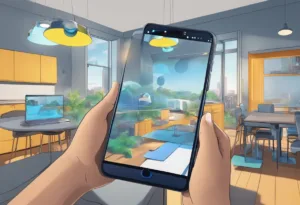
- Vuforia
- ARKit
- ARCore
- Wikitude
- Magic Leap
- Microsoft HoloLens
- Blippar
- Layar
- ZapWorks
- Unity MARS
- Aurasma
- ARToolKit
- EasyAR
- Maxst
- RealWear
Vuforia
Vuforia is a comprehensive augmented reality tool that enables developers to create immersive and interactive AR experiences. It boasts advanced features such as image, object, and area recognition, and offers a wide range of functionalities including 3D object tracking and VuMarks, which are a combination of QR codes and AR markers.
Vuforia’s cloud recognition service allows for scalable image recognition capabilities. This augmented reality tool enhances user engagement across retail, education, and advertising by providing a seamless connection between physical objects and digital content.
ARKit
ARKit is Apple’s augmented reality tool that allows for the creation of next-level AR experiences on iOS devices. It utilizes Visual Inertial Odometry to accurately track the world around it without additional calibration. With ARKit, developers can tap into the latest in AR technology, like motion tracking, environmental understanding, and light estimation, to create highly interactive apps. This tool is particularly beneficial for developers looking to create realistic and responsive AR applications that integrate seamlessly with Apple’s ecosystem.
ARCore
ARCore is Google’s platform for building augmented reality experiences. This augmented reality tool enables apps to understand the environment, detect the size and location of all types of surfaces, and interact with information in the real world. ARCore’s motion tracking allows the phone to understand and track its position relative to the world. This tool is crucial for creating engaging AR applications that function well across a wide array of Android devices.
Wikitude
Wikitude is an augmented reality tool that provides a versatile AR SDK for developers, supporting both location-based and marker-based AR. Its features include image recognition, object recognition, and the ability to create interactive AR experiences that can be deployed across various platforms. Wikitude’s utility in educational, tourism, and marketing applications makes it a powerful tool for engaging users with digital content overlaid onto the real world.
Magic Leap
Magic Leap is an augmented reality tool that pushes the boundaries of immersive experiences with its proprietary spatial computing technology. The Magic Leap One headset allows users to interact with digital content in a mixed reality setting, offering new possibilities in gaming, work, and communication. The tool’s ability to blend digital and physical worlds offers unique benefits for developers aiming to create deeply engaging and intuitive AR experiences.
Microsoft HoloLens
Microsoft HoloLens is an advanced augmented reality tool that offers a mixed reality experience through a self-contained holographic computer. Its applications range from immersive gaming to practical uses in education, healthcare, and industry. HoloLens allows users to interact with holograms in the real world, providing a unique tool for collaboration, design, and innovation.
Blippar
Blippar is an augmented reality tool designed for creating unique marketing and advertising experiences. It enables brands to bring products and print media to life with interactive AR content. Blippar’s AR creation tools make it easy to develop engaging campaigns that can captivate audiences and provide measurable engagement metrics.
Layar
Layar is an augmented reality tool that turns print materials into interactive experiences. It allows publishers and advertisers to enhance magazines, posters, and packaging with digital content that users can access by scanning with their mobile devices. Layar’s platform is beneficial for bridging the gap between traditional print media and digital engagement.
ZapWorks
ZapWorks is an augmented reality tool that empowers designers and developers to create AR experiences without extensive coding knowledge. It offers a user-friendly interface and a range of features for creating interactive AR content. ZapWorks is ideal for businesses looking to quickly deploy AR for marketing, training, or entertainment purposes.
Unity MARS
Unity MARS is an augmented reality tool that extends the capabilities of the Unity game development platform into AR space. It simplifies the creation of AR experiences that are contextually aware and responsive to the physical world. Unity MARS is a powerful tool for developers who want to create complex AR applications with less effort, making it easier to deliver engaging and intuitive experiences.
Aurasma
Aurasma (now HP Reveal) is an augmented reality tool that allows users to create and share AR experiences, known as “Auras.” It provides a platform for enhancing real-world objects with digital content, making it a useful tool for interactive marketing and education. Aurasma’s ease of use helps creators to deliver immersive content quickly and effectively.
ARToolKit
ARToolKit is an open-source augmented reality tool that provides a library for developers to create AR applications. It supports a variety of functionalities, including camera calibration and real-time tracking. ARToolKit is a valuable tool for developers looking for a customizable AR development framework that can be applied to a wide range of applications.
EasyAR
EasyAR is an augmented reality tool that offers a powerful SDK for creating AR experiences. It includes features such as image recognition, 3D object tracking, and environmental understanding. EasyAR’s ease of integration and support for a wide range of platforms make it a cost-effective solution for developers looking to create high-quality AR applications.
Maxst
Maxst is an augmented reality tool that provides a comprehensive AR platform, including a versatile SDK for developers. It supports 2D and 3D object recognition and visual SLAM, making it suitable for creating applications that require precise interaction with the environment. Maxst’s robust tracking capabilities make it an ideal tool for developing AR experiences that are deeply integrated with the user’s surroundings.
RealWear
RealWear is an augmented reality tool designed for industrial use. It offers a hands-free, head-mounted wearable computer that provides workers with access to information and expertise while they work. This tool is optimized for use in rugged environments and enables voice-controlled operation, making it ideal for field service, manufacturing, and inspection tasks. RealWear enhances productivity and safety by delivering critical data and support directly to the frontline worker’s field of view.
Developing AR Experiences

AR Development Platforms and SDKs
Developing AR experiences requires the use of specialized software development kits (SDKs) and platforms. Some of the most popular AR development platforms and SDKs include Unity, ARKit, ARCore, Unreal Engine, RealityKit, and Xcode. These tools provide developers with the necessary features and functionalities to create interactive AR content for various devices.
Unity is one of the most popular AR development platforms, offering a wide range of features for creating high-quality AR experiences. ARKit and ARCore are SDKs provided by Apple and Google respectively, which enable developers to create AR experiences for iOS and Android devices.
Unreal Engine is another popular AR development platform, providing advanced features for creating immersive AR experiences. RealityKit is a newer AR development platform provided by Apple, offering a streamlined approach to creating AR content. Xcode is Apple’s integrated development environment (IDE) for creating AR experiences for iOS devices.
Creating Interactive AR Content
Creating interactive AR content requires a combination of 3D modeling, programming, and design skills. Developers must create 3D models of objects and environments, program interactions and animations, and design user interfaces that are intuitive and easy to use. AR development platforms and SDKs provide tools for creating these elements, but developers must have a solid understanding of these concepts to create engaging AR experiences.
Optimizing AR for Various Devices
Optimizing AR experiences for various devices is crucial for ensuring that users have a seamless and enjoyable experience. AR experiences must be optimized for different screen sizes, processing power, and graphics capabilities. Developers must also consider factors such as battery life, network connectivity, and user privacy when creating AR experiences.
AR development platforms and SDKs provide tools for optimizing AR experiences for various devices. For example, Unity provides tools for optimizing graphics and performance, while ARKit and ARCore provide tools for optimizing tracking and environmental understanding. Developers must also test their AR experiences on different devices to ensure that they work correctly and provide a consistent user experience.
Developing AR experiences requires specialized tools and skills. AR development platforms and SDKs such as Unity, ARKit, ARCore, Unreal Engine, RealityKit, and Xcode provide developers with the necessary features and functionalities to create interactive AR content for various devices. Developers must have a solid understanding of 3D modeling, programming, and design concepts to create engaging AR experiences. Optimizing AR experiences for various devices is crucial for ensuring a seamless and enjoyable experience for users.
Designing and Customizing AR
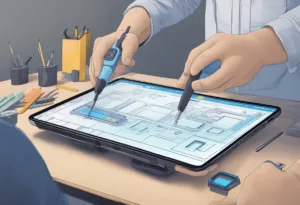
Augmented Reality (AR) is an innovative technology that enhances the real world with digital content, such as images, sounds, or information. In order to create a successful AR experience, it is crucial to design and customize the AR content to meet the needs of the user.
Customizing 3D Objects and Animations
One of the most important aspects of AR design is the customization of 3D objects and animations. This can be done using various AR tools, such as Reality Composer, which allows users to drag-and-drop 3D objects and animations into their AR project. Reality Composer provides a variety of customization options, such as changing the lighting and adding sound effects, to create a more immersive experience.
Another tool for customizing 3D objects and animations is the Reality Converter app, which makes it easy to convert, view, and customize USDZ 3D objects on Mac. This app allows users to drag-and-drop common 3D file formats, such as .obj, .gltf, and .usd, to view the converted USDZ result, customize material properties with their own textures, and edit file metadata.
Implementing Effective User Interactions
In addition to customizing 3D objects and animations, it is important to implement effective user interactions in AR design. This can be done using various techniques, such as adding touch or gesture controls to the AR experience. For example, users can interact with 3D objects by tapping or swiping on them, or by using hand gestures to manipulate the objects.
Implementing effective user interactions can also involve adding sound effects or animations to provide feedback to the user. For example, when a user taps on a 3D object, a sound effect can be played to indicate that the object has been selected. Similarly, when a user swipes on a 3D object, an animation can be played to indicate that the object has been moved.
Designing and customizing AR content is a crucial aspect of creating successful AR experiences. By using AR tools such as Reality Composer and the Reality Converter app, and implementing effective user interactions, designers can create immersive and engaging AR experiences for their users.
Publishing and Sharing AR Projects
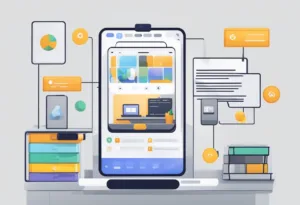
Augmented Reality (AR) projects can be published and shared across various platforms, including the web and social media. This section covers the supported file formats for AR projects and how to share AR experiences across platforms.
Supported File Formats and Conversion
To publish AR projects, it is important to use the supported file formats. Adobe Aero, for instance, supports the GLTF and USDZ file formats for 3D objects. GLTF is an open-source file format for 3D scenes and models, while USDZ is a file format developed by Apple for AR experiences. Blender is a useful tool for creating 3D models and animations that can be exported to these file formats.
It is also possible to convert other file formats to GLTF and USDZ using conversion tools such as FBX2glTF and Reality Converter. FBX2glTF is a command-line tool that converts FBX files to GLTF, while Reality Converter is a macOS app that converts 3D models to USDZ.
Sharing AR Experiences Across Platforms
Once an AR project is ready, it can be shared across various platforms. Adobe Aero allows users to generate a public link and a QR code that can be shared with others. Anyone who has the link or QR code can view the AR experience on their device.
Blippbuilder is another AR authoring tool that allows users to publish and share AR experiences across the web and social media platforms. Blippbuilder supports web-based AR experiences that can be accessed using a web browser without the need for an app.
Publishing and sharing AR projects requires the use of supported file formats and conversion tools. Adobe Aero and Blippbuilder are two popular AR authoring tools that support the publishing and sharing of AR experiences across various platforms.
Augmented Reality in Different Domains
Augmented Reality (AR) is a technology that has been embraced in various domains, including education, gaming, healthcare, and entertainment. This section will highlight how AR has been applied in these domains.
AR in Education and Training
AR technology is increasingly being adopted in education and training. AR tools have been developed to enhance classroom learning by providing interactive and engaging experiences. AR can be used to create simulations, allowing students to explore and learn in a safe environment. AR can be used to provide real-time feedback, helping students to understand complex concepts. Some AR tools used in education include AR flashcards, AR textbooks, and AR simulations.
AR in Gaming and Entertainment
AR technology has revolutionized the gaming and entertainment industry. AR games provide a unique and immersive experience, allowing players to interact with the virtual world in real-time. AR has also been used in the entertainment industry to create interactive experiences, such as AR concerts and AR movies. The Pokemon Go game is a populAR example of an AR game that has been widely adopted by gamers.
AR in Healthcare and Retail
AR technology has also been applied in the healthcare and retail industries. In healthcare, AR can be used to provide medical training simulations, allowing medical professionals to practice procedures and surgeries. AR can also be used to create interactive patient education materials. In the retail industry, AR can be used to provide customers with an immersive and interactive shopping experience. AR can be used to create virtual fitting rooms, allowing customers to try on clothes virtually.
AR technology has been widely adopted in various domains, including education, gaming, healthcare, and entertainment. AR has provided unique and engaging experiences in these domains, enhancing learning, entertainment, and customer experiences.
Frequently Asked Questions
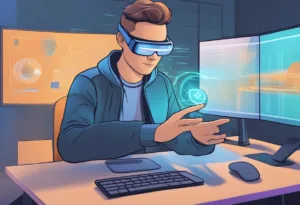
What are the best entry-level augmented reality software options for beginners?
For beginners, some of the best entry-level augmented reality software options include CoSpaces Edu, Metaverse, and Aurasma. These platforms offer user-friendly interfaces and intuitive tools that make it easy for beginners to create and experience augmented reality content.
Which platforms offer free augmented reality development tools?
There are several platforms that offer free augmented reality development tools, including Unity, Vuforia, and ARToolKit. These tools can be used to create a wide range of augmented reality experiences, from simple 2D overlays to complex 3D animations.
How can I access augmented reality tools online without downloading software?
There are several online platforms that offer augmented reality tools that can be accessed directly through a web browser. Some popular options include ZapWorks, Blippar, and HP Reveal. These platforms allow users to create and experience augmented reality content without the need to download any software.
What are the top augmented reality tools currently used in educational settings?
Some of the top augmented reality tools currently used in educational settings include CoSpaces Edu, Metaverse, and Aurasma. These platforms offer a wide range of educational resources and tools that allow teachers to create engaging and interactive learning experiences for their students.
Are there any high-quality augmented reality platforms available for free?
Yes, there are several high-quality augmented reality platforms available for free, including Unity, Vuforia, and ARToolKit. These platforms offer powerful tools and features that allow users to create professional-grade augmented reality experiences without the need to pay for expensive software.
What devices are commonly used to experience augmented reality applications?
Augmented reality applications can be experienced on a wide range of devices, including smartphones, tablets, and wearable devices such as smart glasses. Some popular devices for experiencing augmented reality include the iPhone, iPad, and Android smartphones and tablets.

